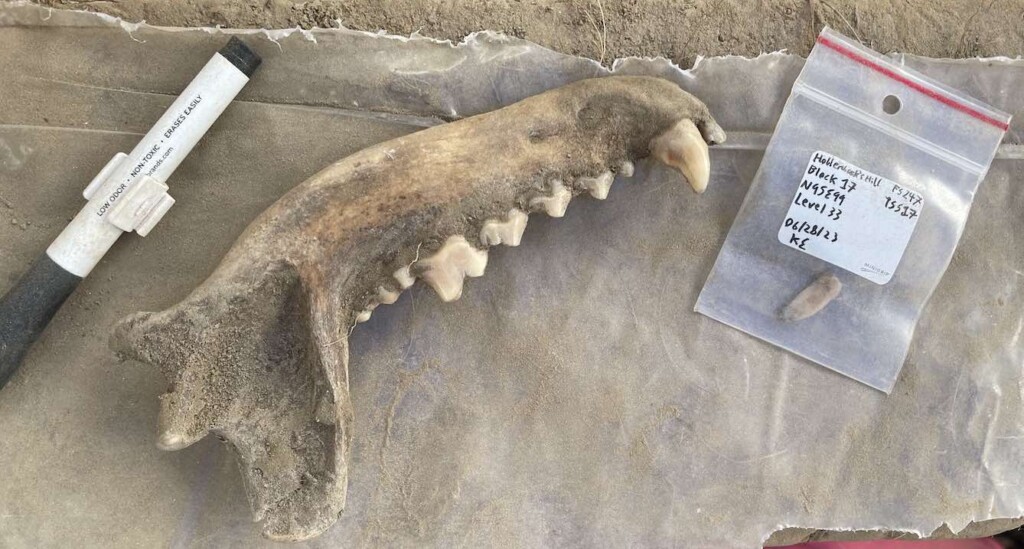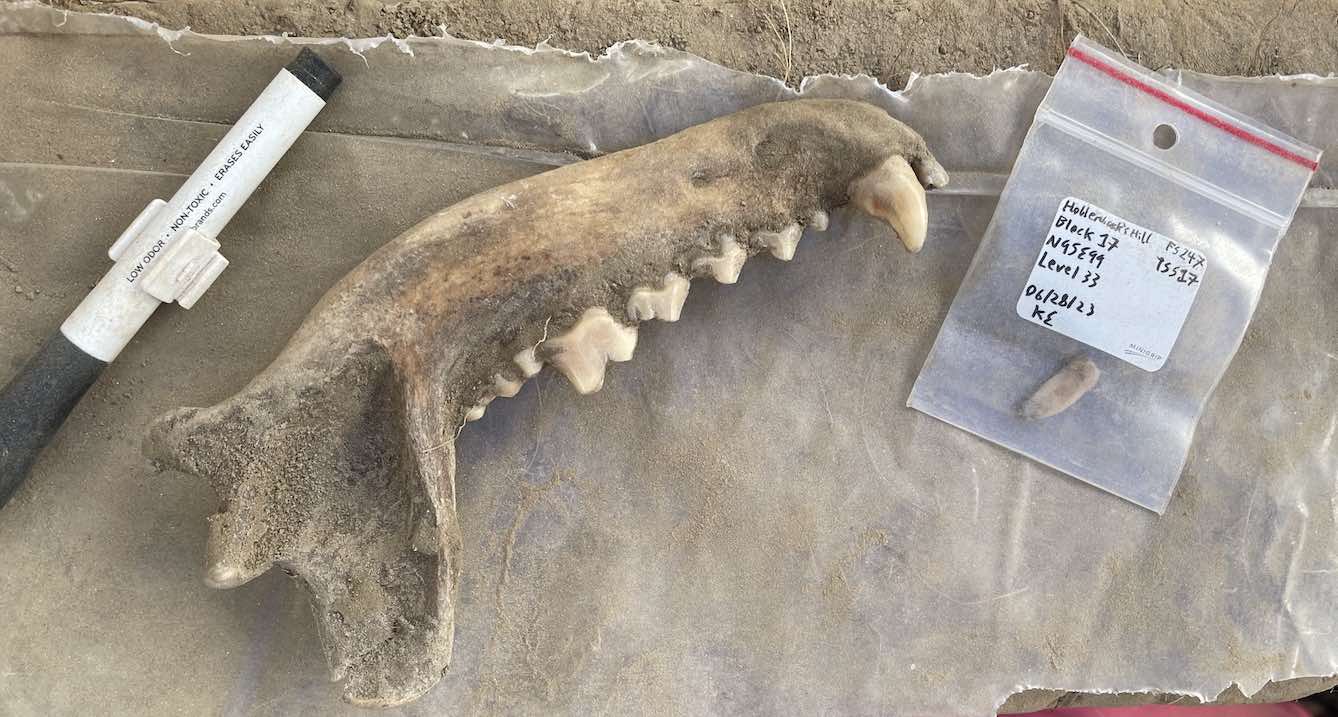
Dogs first became “man’s best friend” at least 12,000 years ago, suggests new research.
Indigenous people in the Americas began forming close relationships with the ancestors of today’s dogs around 2,000 years earlier than previously recorded on the continent, based on remains found in Alaska.
Researchers unearthed a tibia, or lower-leg bone, of an adult canine in 2018 at a longstanding archaeological site called Swan Point, about 70 miles south east of Fairbanks.
Radiocarbon dating showed that the canine was alive about 12,000 years ago, near the end of the Ice Age.
“We now have evidence that canids and people had close relationships earlier than we knew they did in the Americas,” said study lead author Dr. François Lanoë with the University of Arizona School of Anthropology.
“People like me who are interested in the peopling of the Americas are very interested in knowing if those first Americans came with dogs.
“Until you find those animals in archaeological sites, we can speculate about it, but it’s hard to prove one way or another. So, this is a significant contribution.”
Another excavation by the research team in 2023 found an 8,100-year-old canine jawbone at a nearby site called Hollembaek Hill—and that one also showed signs of possible domestication.
Chemical analyses of both bones found “substantial” contributions from salmon proteins, meaning the canine had regularly eaten fish. The researchers said that wasn’t typical of canines in the area at that time, as they hunted land animals almost exclusively.
They say the most likely explanation for salmon showing up in the animal’s diet is from humans serving it up.
An archaeologist with the University of Alaska–Fairbanks, Dr. Ben Potter, called it “the smoking gun” because they’re not really going after salmon in the wild.”
The researchers are confident that the Swan Point canine helps establish the earliest known close relationships between humans and canines in the Americas.
But they say it’s too early to say whether the discovery, published in the journal Science Advances, is the earliest domesticated dog in the Americas.
Dr. Potter, the study co-author, said that is why the study is valuable: “It asks the existential question, what is a dog?”
Prof. Lanoë says the Swan Point and Hollembaek Hill specimens may be too old to be genetically related to other known, more recent dog populations.
“Behaviorally, they seem to be like dogs, as they ate salmon provided by people. But, genetically, they’re not related to anything we know.”
He noted that they could have been tamed wolves rather than fully domesticated dogs.
The indigenous people of the region have long considered their dogs to be ‘mystic’ companions.
“I really like the idea that, in the record, however long ago, it is a repeatable cultural experience that I have this relationship and this level of love with my dog,” said Evelynn Combs, a tribal member involved in the archaeology department.
“I know that throughout history, these relationships have always been present.
“I really love that we can look at the record and see that thousands of years ago, we still had our companions.”
SHARE THE PAW-SOME RESEARCH With Dog-Lovers On Social Media…




















